Business insights that prove the value of design
Design is powerful.

Design is powerful.
Design is powerful as a catalyst for change.
Design is powerful for developing innovative solutions.
Design is powerful for driving exponential growth for businesses.
Design is powerful in solving some of the world’s most difficult problems.
If design is so revolutionary, why do so few companies embrace design?
I wrote about the failure of Fortune 500 companies to embrace design beyond their art departments, where most Fortune 500 companies still fail to even adopt a single design methodology in a meaningful and useful capacity, let alone utilize design broadly in their organizations.
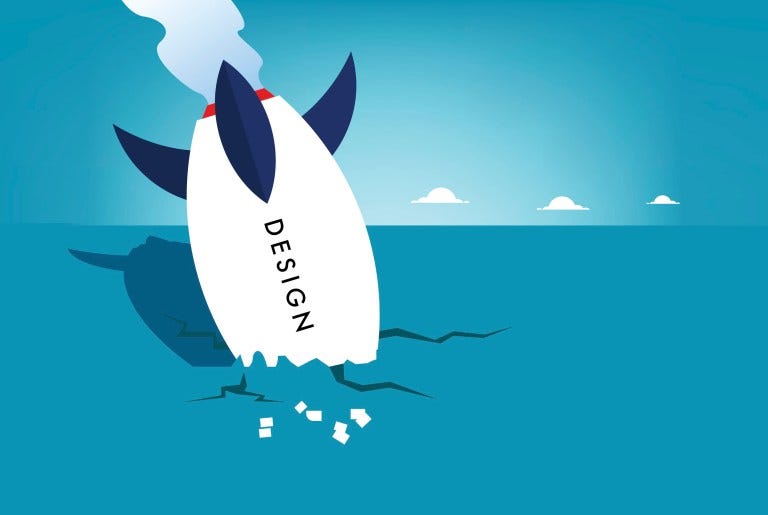
I discussed the rationale for failure that I’ve seen working and consulting for many Fortune 500 companies, where the issues range from naive corporate leaders to our failing education system to societal norms — all have played a part in slowing the progress of design.
However, I’ve found the number one reason that Fortune 500 executives don’t fully buy into design as a catalyst for innovation and growth is that most executives still don’t understand the value of design or how to quantify design’s value.
That is, until now…
Insight #1: The McKinsey Design Index //
Design-led companies increased their revenues and total returns to shareholders (TRS) substantially faster than their industry counterparts
McKinsey is one of the top management consulting firms that solves some of the toughest challenges for leading businesses, governments, and institutions around the world. They’re also a strategic thought leader where they publish their research & insights in the McKinsey Quarterly.
Leading a pioneering study in 2018, McKinsey set out to link design and financial performance for the first time ever. They tracked the design practices of 300 publicly listed companies over 5 years in multiple countries and industries, where they interviewed and surveyed senior business and design leaders. More than two million pieces of financial data were collected and more than 100,000 design actions were recorded.

To analyze the data, McKinsey used advanced regression analysis to uncover the 12 actions showing the greatest correlation with improved financial performance and then clustered these actions into the following four broad themes of good design:
- Analytical leadership
- Cross-functional talent
- Continuous iteration
- User experience

The four themes of good design described above form the basis of the McKinsey Design Index (MDI), which rates companies by how strong they are at design and how that links up with the financial performance of each company. The McKinsey research yielded several striking findings, where they found the top-quartile companies in design — and leading financial performers — excelled in all four areas.
The most powerful insight they found was a strong correlation between high MDI scores and superior business performance. This proves that design is a key driver of business value, innovation, and growth!
Top-quartile MDI scorers increased their revenues and total returns to shareholders (TRS) substantially faster than their industry counterparts did over a five-year period, with 32% higher revenue growth and 56% higher TRS growth for the period as a whole.

The results were the same in all three of the industries that McKinsey looked at, including medical technology, consumer goods, and retail banking. This lead to an extraordinary insight: that good design matters equally across companies who focus on physical goods, digital products, services, or some combination of these.
TRS and revenue differences between the fourth, third, and second quartiles were marginal. In other words, the market disproportionately rewarded companies that truly stood out from the crowd (see charts below).

Insight #2: Harvard Business Review — Design Value Index //
Design-driven companies have beat the S&P Index over 10 years by a wide margin
To better understand how design leads to returns, Harvard Business Review worked with the Design Management Institute to produce a new tool that tracks the results of design-centric companies against companies who haven’t embraced design. They call it the Design Value Index, where they analyze the performance of US companies committed to design as an integral part of their business strategy.
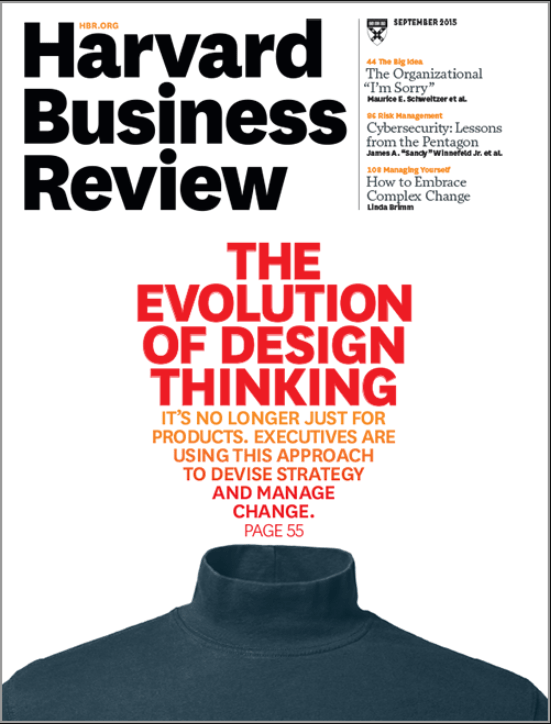
They found that better products or a superior customer service are no longer enough to stand out. Technology has lowered barriers for entry and, with that, kicked off a new era of competition.
The most powerful insight revealed from the Design Value Index is that design-driven companies have outperformed the S&P Index by 228% over 10 years!

Top companies are leading with design. Others that aren’t willing to invest in design because they think it can’t be measured or tied to ROI will fall behind.
Business as usual is no longer good enough. Mature industries that have focused on more, better, and faster now need to adjust their thinking to include design as a key value differentiator.
Insight #3: Adobe — The Creative Dividend //
Companies that foster creativity enjoy substantially larger market share
In May 2014, Adobe partnered with Forrester Consulting to develop research on how creativity influences business outcomes. The study surveyed senior managers from corporations around the world and from myriad industries to quantify and qualify how creativity impacts business results. They wanted to see if companies that cultivate creativity are more profitable than those that don’t.
The results were remarkable, where they found that creative companies do in fact achieve exceptional revenue growth compared to their peers — 58% of survey respondents that said their firms foster creativity had year over year (YoY) revenue increase by 10% or more. In contrast, only 20% of less creative companies performed similarly.

Digging further, design-led companies invest heavily in powerful customer experiences (CX) and digital products — key elements to get customers’ attention and motivate them to keep coming back. Design is critical to ensure customers are discovering, engaging, and buying products seamlessly across devices, while optimizing each touch point to ensure customers are satisfied with their experience.
Their survey showed that creative companies are also more likely to have a commanding market leadership position with a 150% higher market share than their competitors.
Creative companies outperform their peers, achieving 69% recognition as “best places to work” compared to just 27% of less creative firms, a 3:1 ratio, fostering high-performance environments that drive innovation and employee satisfaction. By prioritizing creativity, 83 creative firms earn national accolades versus 26 less creative ones, proving a positive work culture enhances both reputation and performance.
To harness creativity, 58% of companies set goals for creative outcomes and collaborate with customers, while 55% of executives prioritize and 48% fund innovative ideas from brainstorming. Leadership must nurture and invest in programs that boost creative capability, including early technology adoption and novel customer experiences, to strengthen brand loyalty and business success across industries.
Insight #4: Forbes — Good UX Design Means Better Business //
Better UX design dramatically increases conversion rates and has an huge impact on ROI
In today’s digital landscape, delivering seamless, frictionless user experiences across all platforms is a critical expectation, as optimized UX has become a prerequisite for success. By understanding customers’ needs and aligning interactions with their daily lives, companies can enhance engagement and drive business outcomes effectively.

Creative firms excel by offering integrated digital experiences that balance content and conversions, yet many leaders focus solely on revenue, overlooking UX’s transformative potential. Targeted UX strategies, informed by clear customer insights, empower brands to strengthen their digital ecosystem, boost loyalty, and achieve significant business impact.
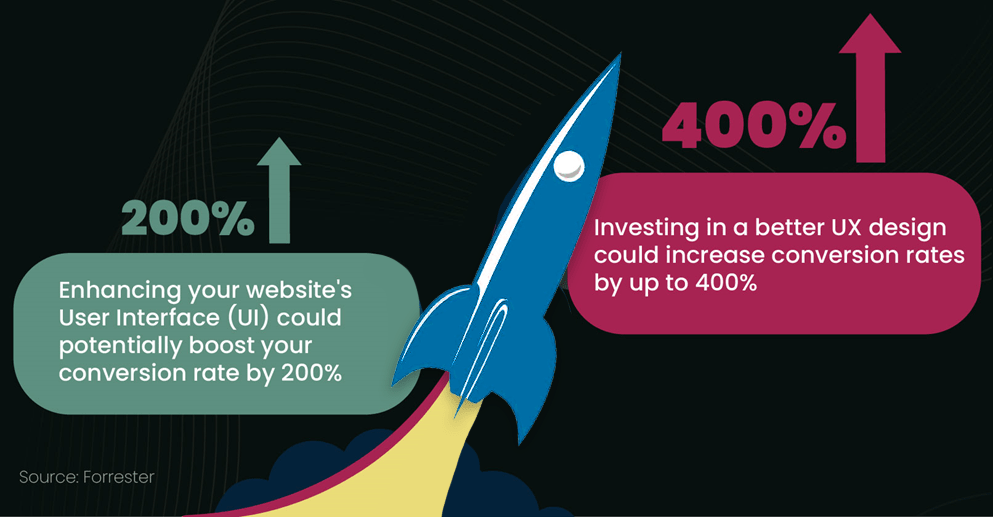
In a recent study from Forrester Research, a well-designed user interface could raise your website’s conversion rate by up to a 200%, and a better UX design could yield conversion rates up to 400%.
While I know the power of design, seeing that data is eye opening. I recommend that executives immediately prioritize UX not only to be more competitive, but also to boost customer acquisition, satisfaction, and retention. UX is a means to these ends, requiring a comprehensive approach that accounts for diverse user influences and embeds UX into long-term business strategy for lasting impact.
Research from Forrester shows that those companies that do invest in UX design, on average, every dollar invested in UX brings 100 in return. That’s an ROI of 9,900%!
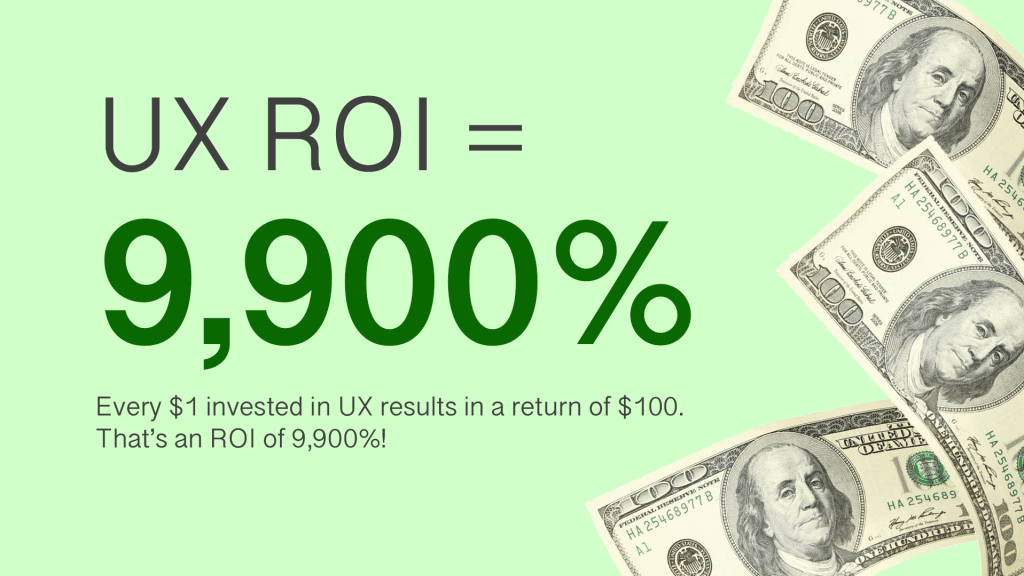
Businesses are radically transforming with UX design — so the question is not if or when to adapt, but how to make UX a priority and not an afterthought. Early adopters of innovation gain competitive advantage, and the benefits of adopting an effective UX strategy are transformational.
Insight #5: National Endowment for the Arts — Small Manufacturers Increased Sales with Design //
A National Endowment for the Arts report found small manufacturers saw a massive increase in average sales after investing in design
For centuries, industrial design has shaped the way products are created, but its transformative power as a catalyst for business growth has only recently gained the spotlight. The National Endowment for the Arts (NEA) highlights this in a compelling report, showing industrial design as an underutilized driver of success for U.S. small and medium-sized manufacturers (SMMs), which are defined as companies with fewer than 500 employees. These businesses are the backbone of American manufacturing, generating 56% of new manufacturing jobs, comprising 98% of manufacturing firms, and handling 60% of the process from raw materials to consumer products.
As global competition intensifies, driven by the rise of companies like Apple and the Internet of Things (IoT), alongside growing consumer demand for superior user experiences, industrial design has become indispensable.

It’s no longer just about aesthetics; it’s about rethinking how products are made and how they solve real-world problems, positioning design as a cornerstone of innovation and economic growth.
In the past decade, the emergence of design thinking has redefined industrial design’s role, extending its methodologies to tackle a wide range of business challenges. Design thinking — as a creative and iterative process — involves identifying company-wide and product-specific problems, analyzing solutions with manufacturing in mind, and crafting answers that prioritize the end user’s needs. This approach has proven critical in an era where successful product launches face intense pressure.
Jeneanne Rae, in her article “What is the Real Value of Design,” captures this shift where she says “Design can also make great strides to help get the cost out of manufactured goods through rethinking the ways and means products come together.” By optimizing production processes, design not only enhances product appeal but also drives significant cost savings, amplifying its financial impact.

The business case for design is unbelievable. Procter & Gamble, known for brands like Tide and Pampers, exemplifies this by developing thinner, cheaper, and more sustainable plastics, potentially saving up to $1 billion annually. This innovation illustrates how design can simultaneously manage costs and drive top-line growth, effectively doubling its financial impact.
Companies that integrate design don’t just cut expenses; they create products that resonate with consumers, fostering loyalty and market differentiation.
The NEA report emphasizes that SMMs leveraging design see tangible benefits, as their agility allows them to adapt quickly to market demands, unlike larger firms bogged down by bureaucracy. Further evidence of design’s value comes from Fernando Galindo-Rueda and Valentine Millot in their study “Measuring Design and its Role in Innovation.”
They state that “the use of design as an integrated element is highly correlated with innovation outcomes, particularly product and marketing innovations, including new-to-market innovations. Controlling for observed the probability of introducing a product innovation is 24% higher for firms where design is integrated.”
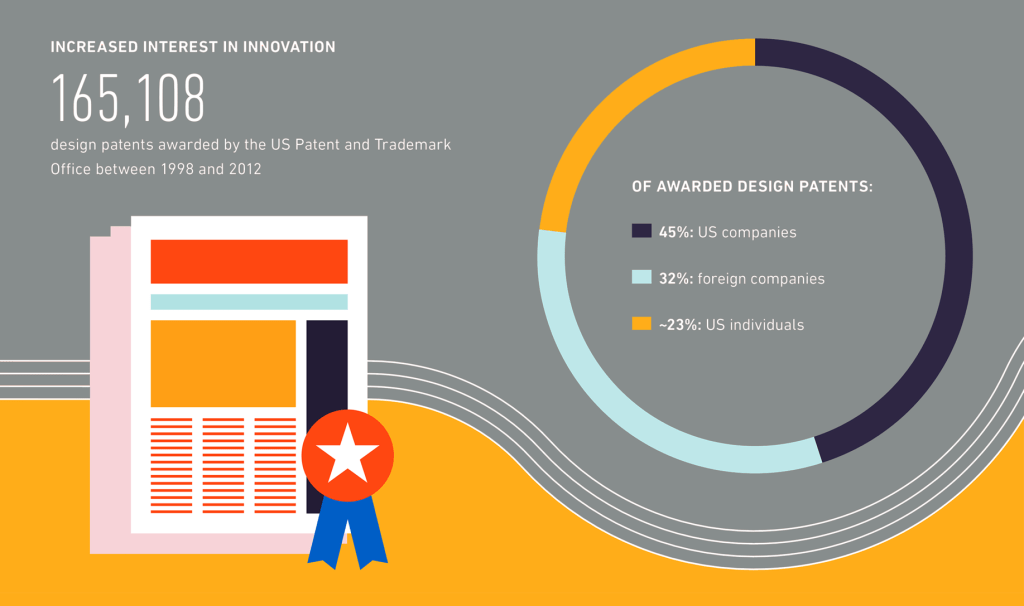
Their data reveals that firms with integrated design achieve a 9.1% higher employment growth rate, an 18.7% higher value-added growth rate, and a 10.4% higher productivity growth rate compared to similar-sized firms without design integration.
These metrics really showcase design’s role in driving not just innovation but also measurable economic gains.
In today’s tech-driven market, where consumer expectations are higher than ever, design is no longer optional — it’s essential. Companies that harness design as an integrated strategy can differentiate their products, streamline operations, and meet evolving consumer demands.
The success of SMMs, which form the majority of U.S. manufacturing, hinges on embracing design to stay competitive. From cost savings to market-leading innovation, industrial design proves its worth as a powerful engine for growth, transforming businesses and redefining what’s possible in manufacturing.
Conclusion //
As a designer, I feel like I’m finally being awakened out of a long nightmare where design wasn’t understood or valued. Sure many of us designers have known the truth about design’s value for a very long time, but along the way there’s only been a few business leaders who have dared to embrace design.
Now thanks to the undeniable evidence from McKinsey, Harvard Business Review, Adobe, Forbes, and the NEA, the world will finally know about design’s transformative power in business as a value driver. And we can finally bury the myth that design is a cost center.

McKinsey’s findings are worth repeating; design-driven companies achieve 32% higher revenue growth and 56% higher shareholder returns over five years! And Harvard Business Review found that design-driven companies have outperformed the S&P Index by 228% over 10 years! This proves design is a cornerstone of innovation and profitability. It also highlights the fact that in today’s tech-driven market, superior products alone don’t suffice; you must be design-driven in order to outperform your peers.

Some of the world’s best companies have already embraced design, from IDEO’s Design Thinking revolutionizing consulting to the designers who co-founded Airbnb to Jony Ive’s role as Chief Design Officer at Apple. These companies know that design is essential and valuable tool for innovation, growth, and beating their competition.
Now, it’s time for all of us to champion this data and seize the opportunity to apply design in every organization!

Share these insights at work, home, and school while advocating for design’s strategic role. Let’s passionately make the case to our business leaders, using data and insights to integrate design into company missions, strategies, and operations, where we know it will fuel innovation, develop products that customer love, and deliver extraordinary business value.
Business insights that prove the value of design was originally published in UX Collective on Medium, where people are continuing the conversation by highlighting and responding to this story.
This post first appeared on Read More

